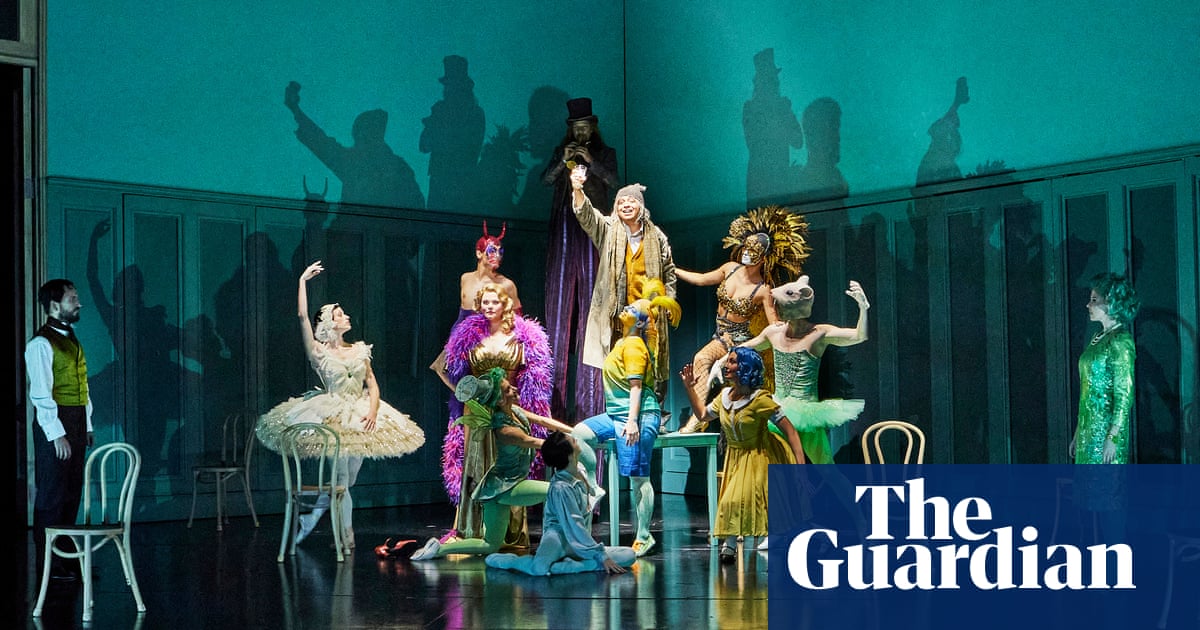
George Balanchine’s Apollo is one of the great male roles in ballet. When Balanchine taught it he was apparently more specific than in any other ballet, yet there are still so many ways to play the young god coming of age. (One of the great interpreters, Jacques d’Amboise, died recently but you can see his 1960 version online.)
For Vadim Muntagirov, donning the deity’s white tights to open this all-American programme, Apollo appears troubled by the weight of expectation on his shoulders, a little like Swan Lake’s Prince Siegfried. There’s subtle wariness, denial and resistance but with each breath and each leap into a deep lunge, he’s growing towards his destiny. Muntagirov seems to have gone through a transformation of his own in the last year, appearing a more mature, more layered dancer, with perhaps more belief in his authority over the stage. His godly technique was never in doubt, his divine sense of line – to put it unromantically, the man’s proprioception must be off the scale.
Apollo is schooled by the muses, the bright presence of Mayara Magri’s Polyhymnia, and the more inscrutable Calliope (Anna Rose O’Sullivan) and Terpsichore (Yasmine Nagdhi, as assured as ever), embodying the precision and restraint of the ballet’s choreography. The ballet, from 1928, is nearly a century old and yet still delights in its invention and idiosyncrasy. It’s full of imagery: an eagle, a chariot, Apollo playing his lute with a full swinging circle of his arm like a very refined rock god. Alongside Stravinsky’s magnificent score, it all equals something approaching the sublime.
In some ways Apollo’s muses are cyphers, feminine ideals; there’s a certain vacancy in their purity. That couldn’t be further away from how Natalia Osipova grabs hold of her role in Tchaikovsky Pas de Deux, another Balanchine work from 1960. Never have you seen someone bring so much drama to a plotless showpiece. Osipova pulls round the tempo, holding back so she then has to speed across the stage to hit her mark. She makes things risky, as if she’s setting herself challenges: how fast can I go? How sharp can I make this pose? Ping! Bam! Her partner Reece Clarke does very well to keep up with her. Osipova makes eye contact with the audience, saying ‘‘Here goes!” as she dives headfirst into Clarke’s arms. She’s extravagant in her high developpés, generous in her movement (she can’t hide her roots at the Bolshoi, where everything is bigger), but even the smallest posé or port de bras is considered. Osipova is a real artist, but also appears a real woman – an actual person – up there on stage, and it’s thrilling to go on that ride with her.
There’s a more go-with-the-flow character to Jerome Robbins’ Dances at a Gathering (from 1969). Set to an hour of Chopin waltzes and mazurkas, only solo piano throughout, the dancers must keep making new discoveries or it can start to ebb a bit more than flow. Of the cast of 10, William Bracewell is most carried away on the music, as if this is not something learned, just instinct. He lives in the moment with partner Francesca Hayward, their eyes meeting as if sharing a secret joke. The work’s denouement is one of the most beautiful closing scenes, when all comes to stillness and the evening’s magic evanesces; dance is only a transitory gift.
At the Royal Opera House, London, until 13 June. Available online from 11 June-11 July.












